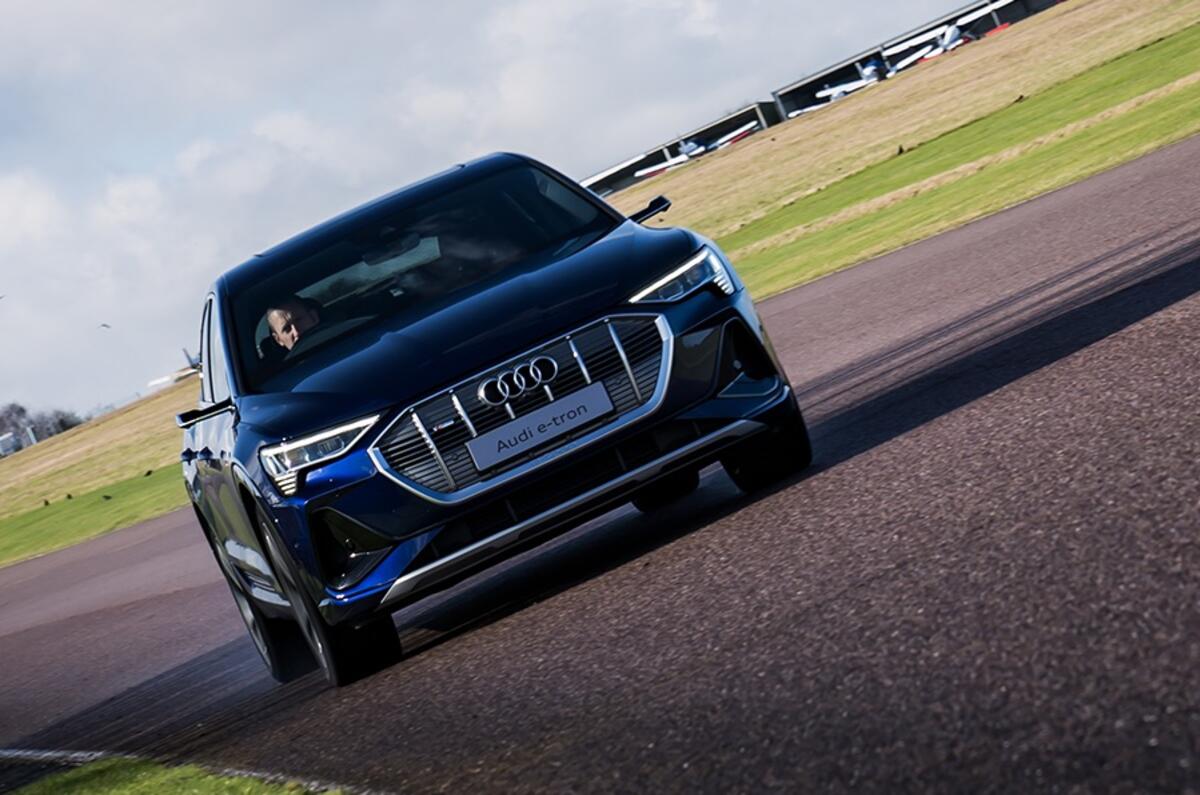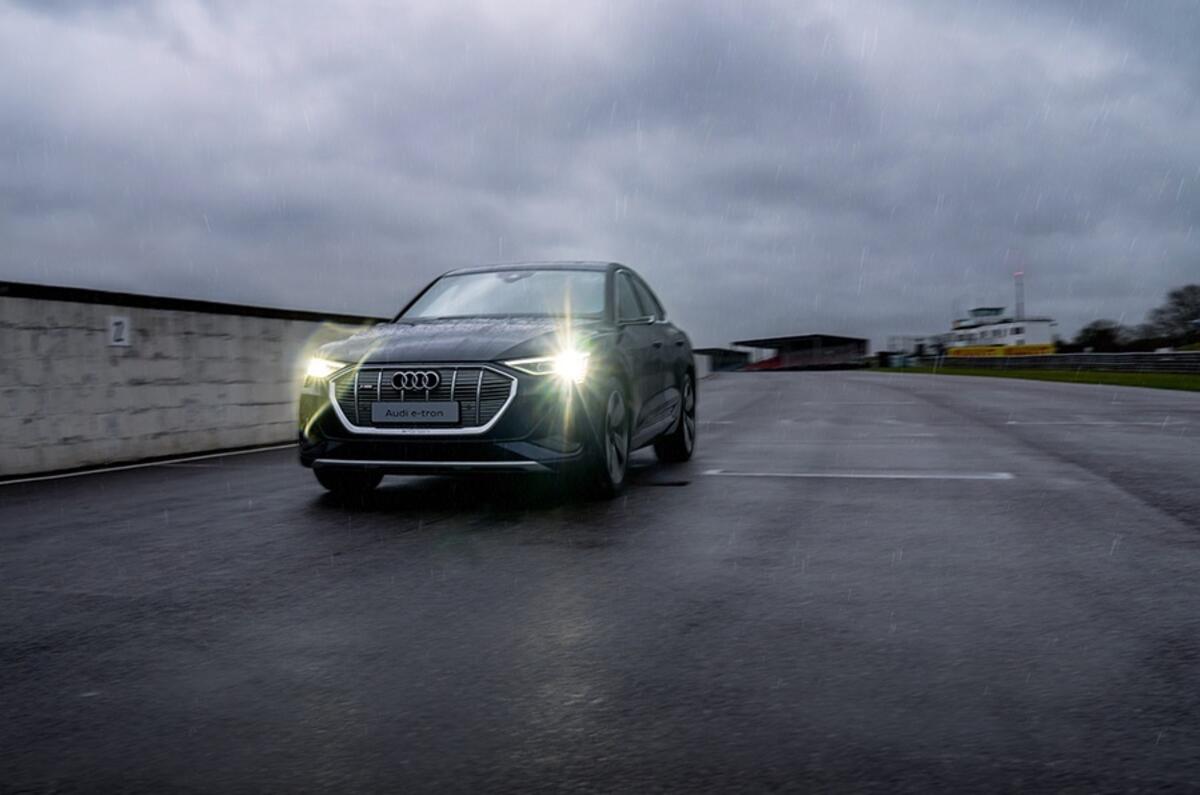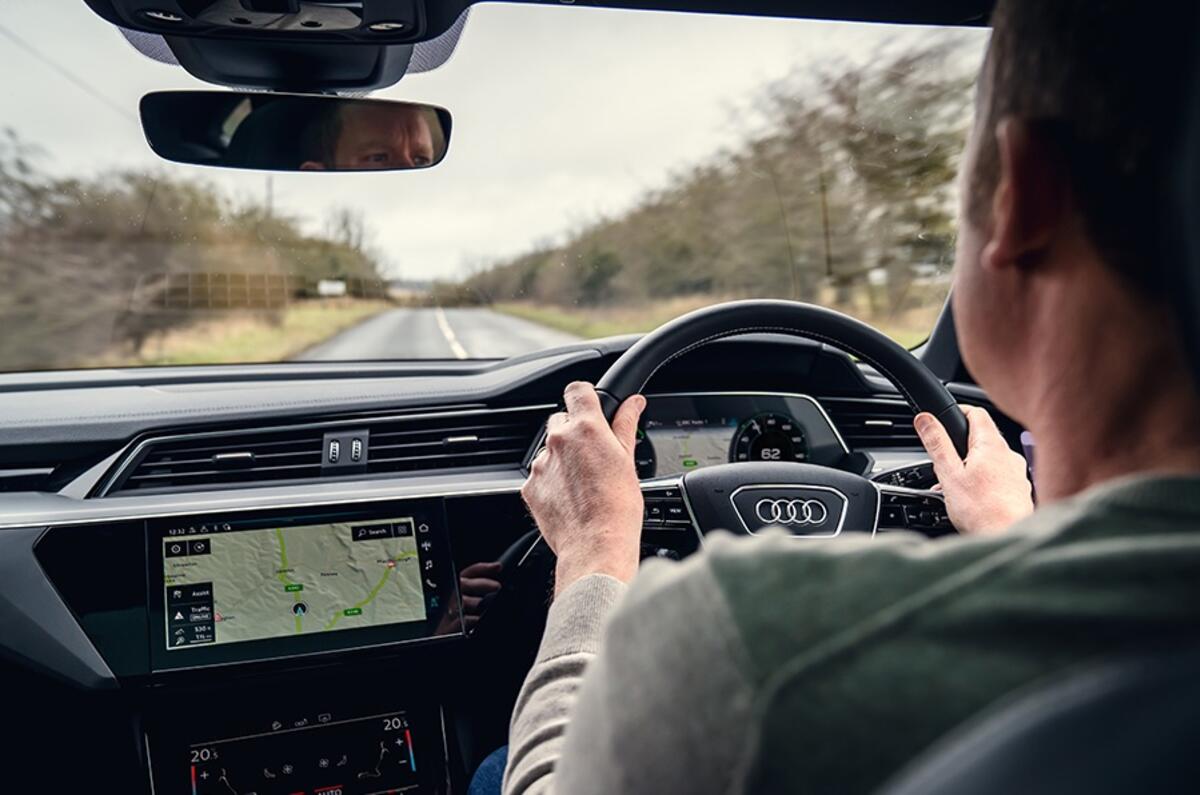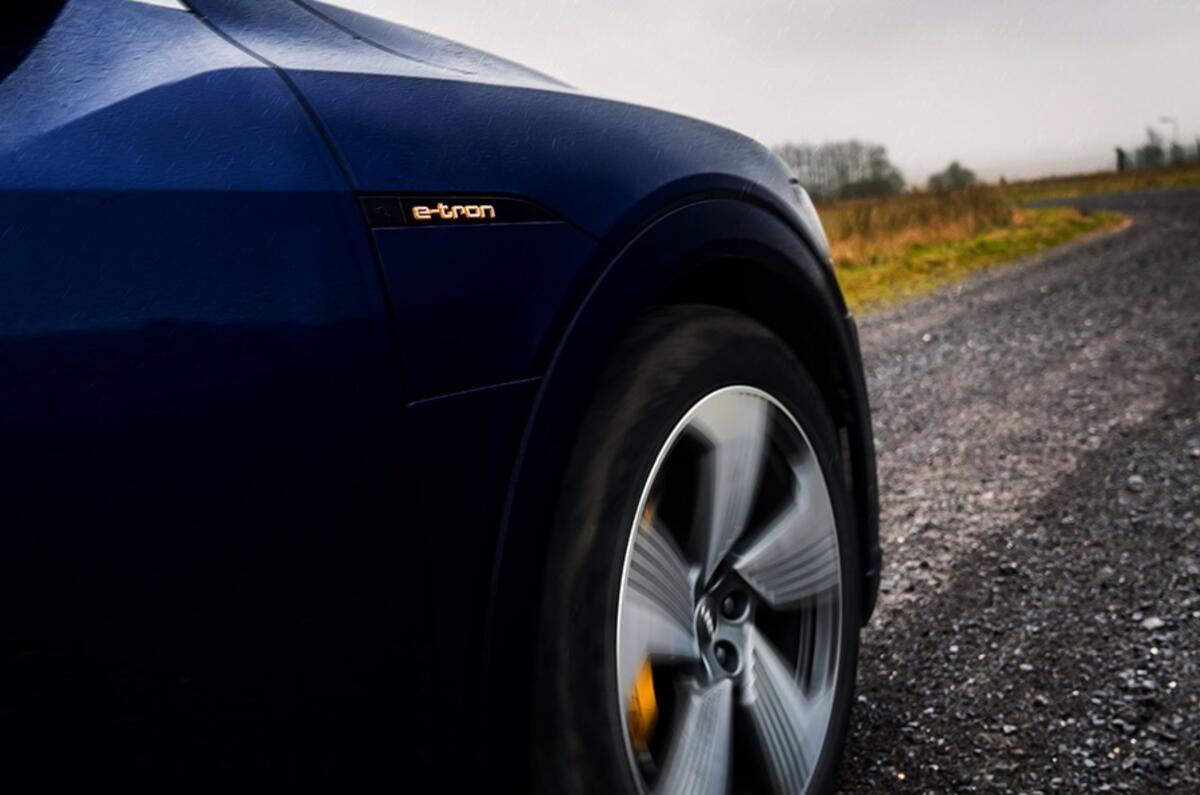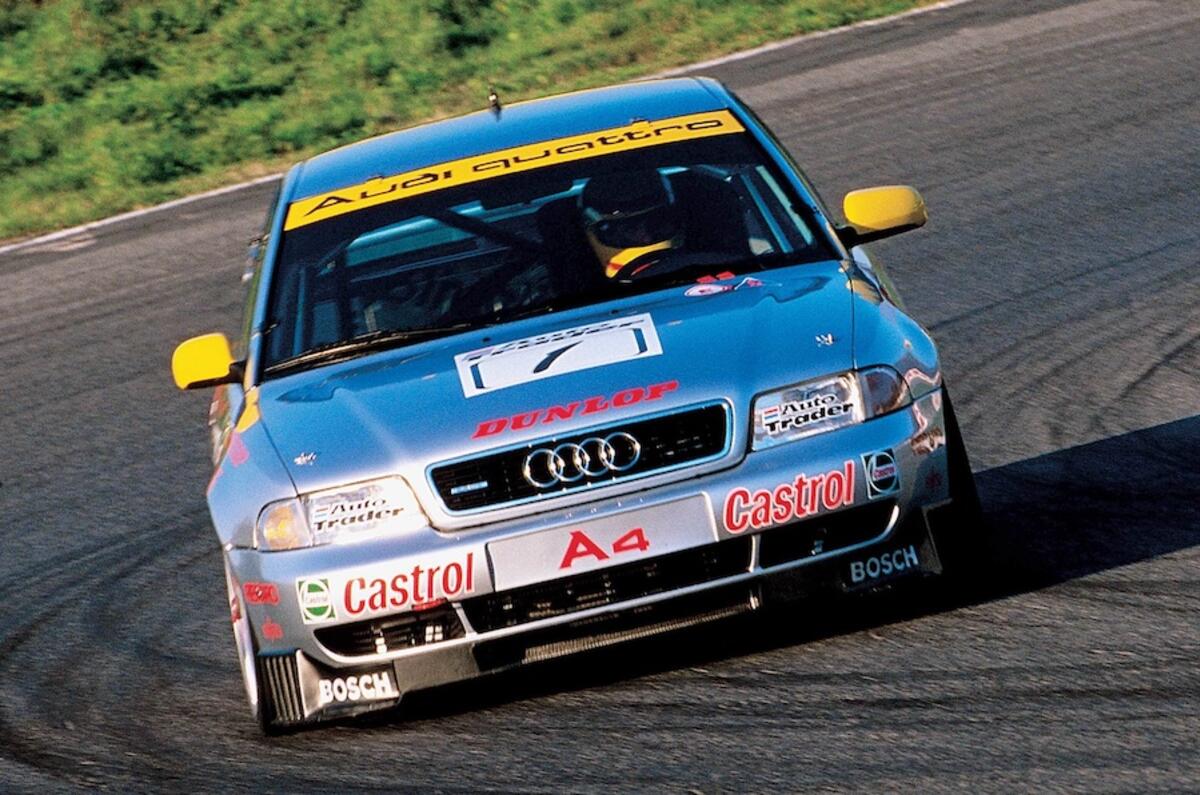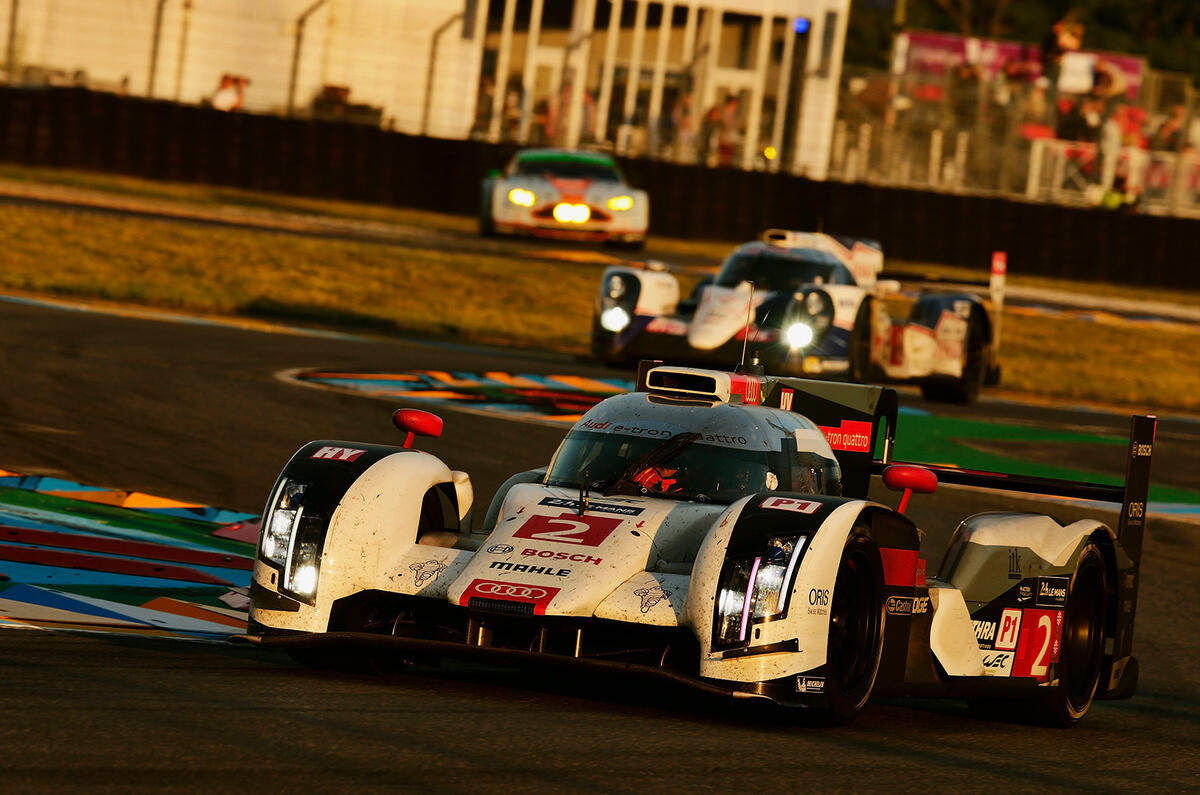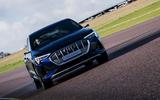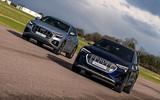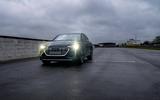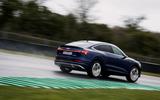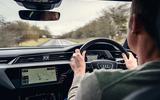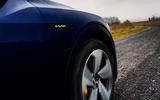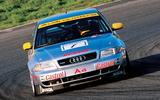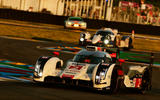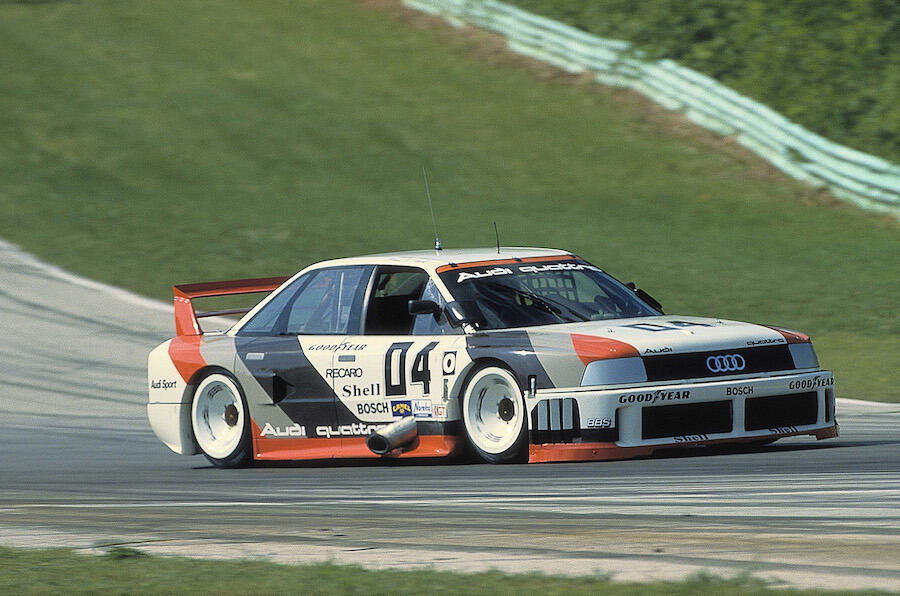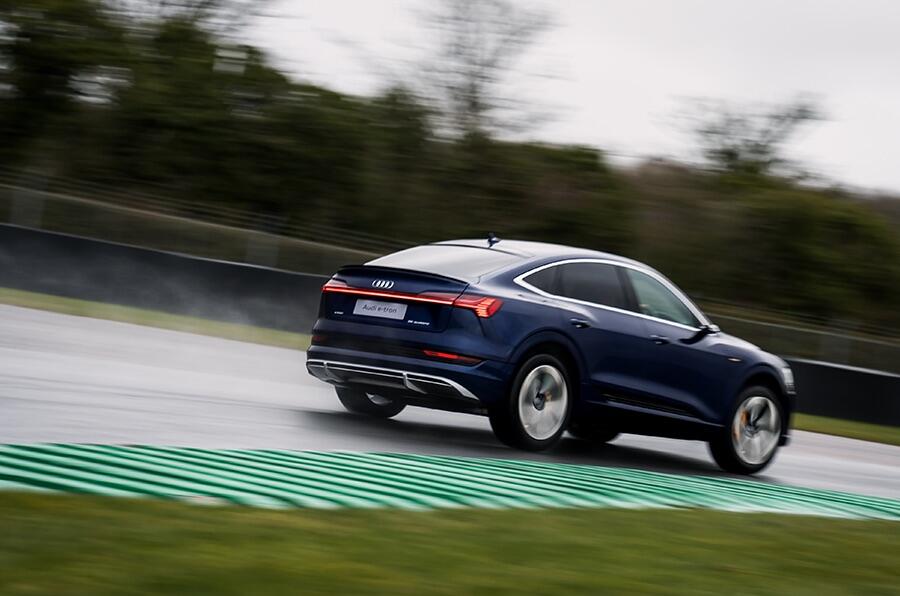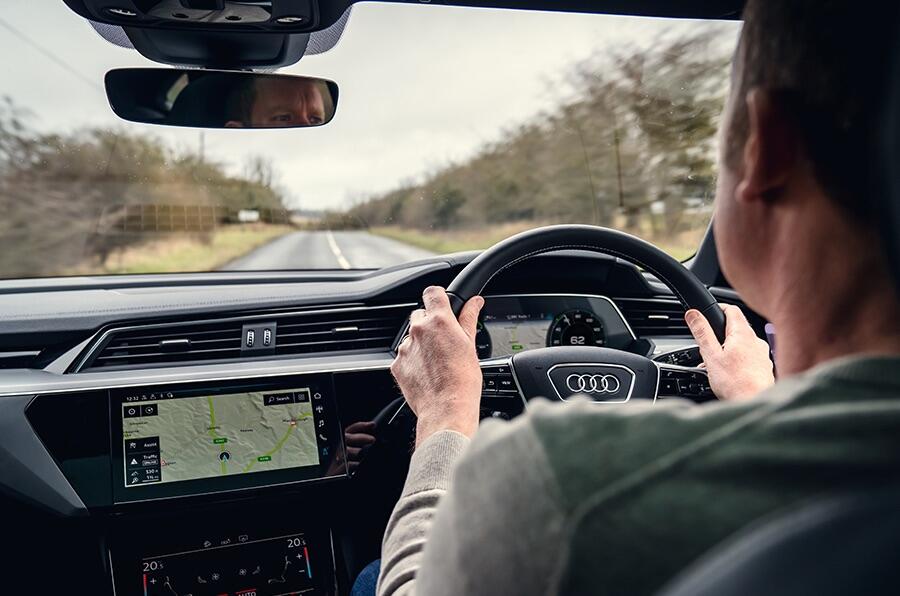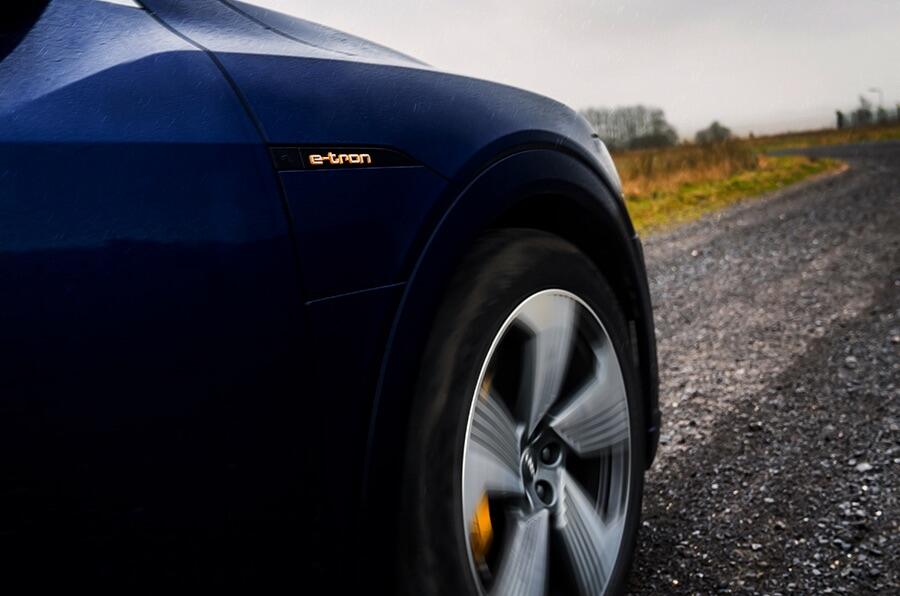Fast sportscar-like acceleration does funny things to your body. Your stomach tightens, your arms tense up, and there’s a compression in your sinuses from the g-forces.
Now, with Audi’s fast-growing range of e-tron models, you can add an electrifying tingle to the hairs on the back of your neck.
If you ever thought the future of electric driving would be dull, the fully charged rush of Audi e-tron quattro grip and stunning Boost Mode acceleration is all you need to change your mind. That’s why we took the Audi e-tron Sportback 55 quattro to Thruxton, the UK’s fastest racing circuit, to see exactly what it could do.
Simply select Dynamic mode, release the brake, floor the throttle and your head is thrust back as the full 408PS and 664Nm of all-electric torque is delivered in one gigantic burst of breath-taking off-the-line electrified quattro traction.
The race from 0-62mph is dispatched in just 5.7 seconds, and – as you continue accelerating towards the e-tron Sportback’s 124mph top speed – there’s no clunky interruption in the power delivery from the ebb and flow of gear changes. Instead, it’s simply a seemingly never-ending wave of power that feels like it could go on forever.
Braking into Thruxton’s Club chicane, the low-mounted positioning of the lithium-ion batteries and air suspension deliver impressive hunkered-down handling that defies the naturally increased weight you get with electric powertrains. Accelerating out of the chicane, you can feel the e-tron Sportback’s front-mounted motor kicking in to deliver extra confidence-inspiring all-wheel-drive traction.
Blending 40 years of all-wheel-drive know-how with the most advanced high-tech all-electric powertrains: this is how Audi e-tron is electrifying quattro performance.
Find out more about Audi’s e-tron range

Born on the rally stage
The concept of quattro all-wheel-drive has been ingrained in Audi’s philosophy of ‘Vorsprung durch Technik’ – or progress through technology – since 1980. All-wheel-drive has been around since pretty much the dawn of the motor car, but its use was primarily limited to rugged off-road vehicles for agriculture, exploring and the military – designed to conquer tough terrain at a slow pace, with a complex set of heavy differentials feeding power to the wheels with the most traction.

